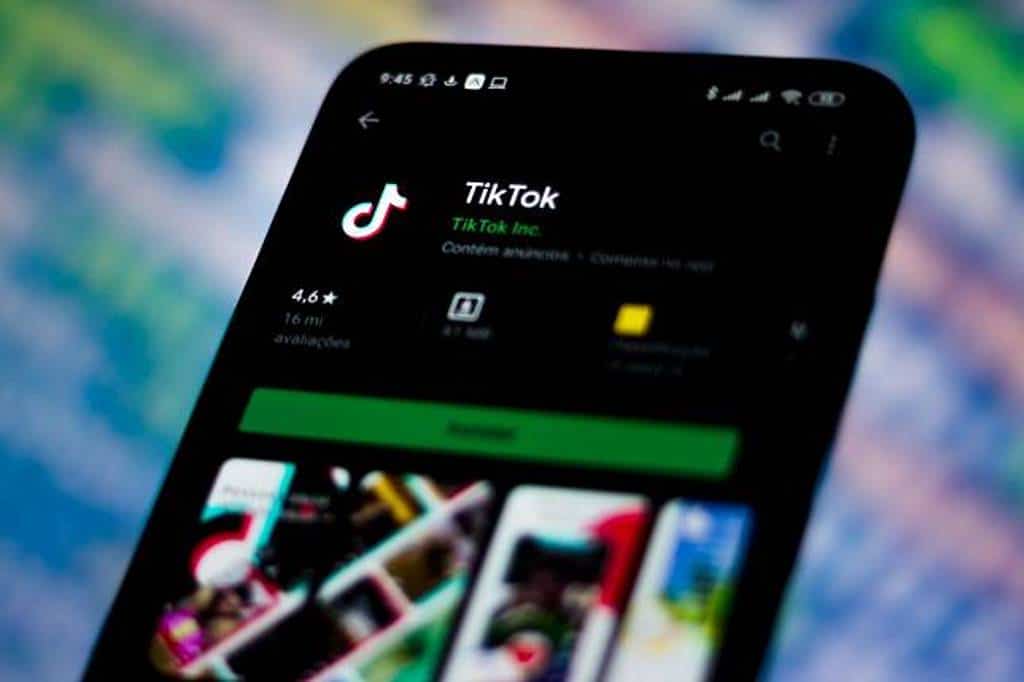Business
Facebook Owner Meta Axes Another 10,000 Jobs

On Tuesday, Facebook owner Meta announced a new round of layoffs as part of the company’s “year of efficiency,” as the US tech sector continues to contract due to Biden inflation.
In an email to employees, Mark Zuckerberg stated that Meta would cut 10,000 jobs over the next few months, focusing on middle management, with 5,000 other positions remaining unfilled. The layoffs follow an 11,000-job cut announced by the company in November.
“This will be difficult, and there is no way around it. It will imply saying farewell to talented and passionate colleagues who have contributed to our success, “According to Zuckerberg.
Meta’s recruitment department will be the first to suffer as the company officially ends the hiring spree that occurred when big tech ramped up operations to meet high demand during the coronavirus pandemic.
The tech and business departments will be affected, and “in a small number of cases, it may take until the end of the year to complete these changes,” according to Zuckerberg.
Zuckerberg warned analysts in January that the company’s “management theme for 2023 is the ‘Year of Efficiency,'” and that he would focus on making the company “a stronger and more nimble organization.”
Meta had a difficult 2022 due to a deteriorating economic climate, which forced advertisers to cut back on marketing, and Apple’s data privacy changes limited ad personalization.
The company is also under fire for betting on the metaverse, a virtual reality world that Meta believes will be the next online frontier.
The company’s share price dropped by an astounding two-thirds in a year due to the problems last year, but the stock recovered in 2023, with investors satisfied by Zuckerberg’s pledge to run a leaner company.
Following the announcement of the latest job cuts, Meta’s stock price increased by 5%.
Meta’s CEO and founder stated that he “will flatten our organization by removing multiple layers of management,” implying that many managers will be ordered to become “individual contributors.”
Zuckerberg said he was pleasantly surprised by the advantages of running a more tightly organized operation where “many things have gone faster” due to eliminating lower priority projects.
“A leaner organization (sic) will complete its highest priorities more quickly. People will be more productive, and their jobs will be more enjoyable and rewarding, “He stated.
 Facebook, Meta Axing Middle Managers a Big Mistake
Facebook, Meta Axing Middle Managers a Big Mistake
Few jobs in corporate America are more thankless — or more mocked — than middle management. They’ve long been derided as petty, powerless, thumb-twiddling bureaucrats who enforce the rules, crack the whip, and stamp out any vestige of creativity or self-initiative. Middle management, so the thinking goes, is for mediocre people.
However, as businesses prepare for tougher times, the assault on middle managers has gained momentum. Mark Zuckerberg is removing layers of management at Meta, demoting many supervisors to the ranks of the supervised. Shopify is also restructuring its corporate hierarchy, resulting in fewer managers. In addition to their supervisory duties, Elon Musk has directed Twitter’s engineering managers to begin writing “a meaningful amount” of code themselves.
CEOs claim they are laying off employees in the name of efficiency. Mark Zuckerberg explained his decision: “I don’t want managers managing managers, managing managers, managing managers, managing managers, managing the people who are doing the work.” His rhetoric is part of a decades-long effort to reduce the number of middlemen in corporate America’s sprawling bureaucracy. Reduce your overhead. Dismantle silos. Remove the red tape. Create a “more fun place to work,” in Zuckerberg’s words. Isn’t it all wonderful?
Except for one thing: Middle managers are the ones who make large organizations function. According to studies, they have a far greater impact on a company’s overall performance than senior executives and a greater impact on the bottom line than the teams they supervise. Businesses are cutting the people they need to weather the economic uncertainty by eliminating middle managers amid an unprecedented shift to hybrid work. They make it more difficult for the remaining managers to succeed. And they’re sending a strong message to talented would-be bosses: Don’t be one.
“You can have a great vision and a great strategy, but if you don’t have managers who create the culture you want to be, none of that stuff will get done,” says Jim Harter, Gallup’s chief scientist for workplace management. “It’ll be all uphill the whole way. Leaders’ jobs are made much easier by effective managers.”
The Big Flattening
There are two archetypes of management structures: hierarchical and flat. Tall organizational trees cascade down ever-descending layers of management in hierarchical organizations. Flat organizations have shorter organizational trees with fewer intermediaries.
Because they must establish a clear chain of command, large corporations tend to be more hierarchical. However, over the last few decades, large corporations have attempted to become flatter — and some, like Zappos, have attempted to do away with hierarchies entirely. According to a study of 300 large corporations, the number of managers layered between CEOs and division heads decreased by more than 25% between 1986 and 1998. Meanwhile, the average number of people reporting directly to the CEO has nearly doubled. The Great Flattening had begun.
The war on middle managers appears to have yielded some of the desired results: According to one study, companies with fewer organizational layers delivered products to customers faster. However, the trend resulted in a culture that dismissed middle managers as useless, despite extensive research showing that the good ones make significant contributions to their organizations.
Consider a series of Gallup studies on employee engagement—a measure of how involved and enthusiastic employees are about their jobs, linked to higher profitability, lower turnover, and lower absenteeism. Across more than 50,000 teams, Gallup’s researchers honed in on a perplexing finding: Even within the same company, some teams performed significantly better in engagement than others. The findings suggested that team-specific dynamics, rather than organizational-wide ones, were key to how employees felt about their jobs.
So the researchers dug even deeper. They were surprised to discover that direct supervisors accounted for 76% of the variation in team engagement, while executives accounted for only 11%. “Your immediate manager has far more influence on your engagement than senior leadership,” Harter says. “It was astonishing how much variation there was across these manager-led teams and how much managers influenced organizational engagement.”
Top executives may be surprised to learn they are worth less than middle managers. However, if you consider your own experience as an employee, it probably makes sense. The person with the greatest impact on your day-to-day work life is not the CEO, who is unlikely to know your existence. Your immediate boss knows to be gentle with you right now because your marriage is crumbling, who tailors their feedback to you in a way that makes you open to change and reshapes assignments from higher-ups to match your strengths and ambitions.
Middle managers, however, underappreciated, frequently make or break how we see and do our jobs. That’s why, according to a recent survey conducted by UKG, a workforce-software provider, employees said their supervisor had just as much of an impact on their mental health as their spouse — and even more than their therapist.
Consider another study that examined middle managers’ impact on business performance. Wharton management professor Ethan Mollick examined two jobs in the gaming industry: designers and producers. Designers are the innovators who create, invent, and build games. Producers are the suits who ensure that projects are completed on time and within budget.
Mollick expected to discover that the innovators’ creative output was more important than the managers’ bureaucratic work. However, the opposite was true: producers accounted for 22% of revenue differences across games, while designers accounted for only 7%. (According to another study, top executives were even less important, accounting for less than 5% of the total.) “High-performing innovators alone are insufficient to generate performance variation,” Mollick concluded. “Rather, individual managers must integrate and coordinate the innovative work of others.”
Managers overseeing managers
It’s a message worth remembering, especially in Silicon Valley, where brilliant coders are worshipped as gods. According to studies, a top programmer can produce as much work as 20 average ones — a statistic that is frequently used to justify paying exorbitant salaries to attract the best engineers. That’s why the tech industry established a separate advancement path for programmers: to provide a way for superstars to earn raises and promotions without becoming managers.
However, by idolizing top performers so much, Silicon Valley devalued the less glamorous role of managers — the people who get the genius coders’ work out into the world. When Elon Musk was asked to name the most “messed up” aspect of Twitter last October, he replied, “There appear to be ten people managing for every one person coding.” Similar disdain can be heard in Zuckerberg’s words. When he mentioned not wanting “managers managing managers,” he left out the most common middle-manager trope: that, unlike employees who are “doing the work,” middle managers aren’t doing anything.
It’s an assumption that an experienced management consultant I spoke with immediately recognized when she accepted a supervisory position at a tech firm. Even though she was in charge of a team, she was told almost immediately that she should spend most of her time working on her projects. Her performance reviews focused on her work rather than her accomplishments as a manager. When she was laid off a few months ago, she wondered if it was because she prioritized developing her team over grinding out her work.
“I believe that spending your time coaching, leading, and developing people is a worthwhile pursuit in and of itself,” she said. “If you want to do those things well, make time for them. People management is a job. But I don’t believe the company’s leadership recognized or valued that. That is not well received in the tech industry.”
People management takes far more time than corporate leaders realize. According to Gallup, the maximum number of direct reports most managers can effectively supervise is ten. Any more than that, according to Harter, it becomes difficult to have meaningful weekly conversations with employees. (At Tesla alone, Musk reportedly has 28 people reporting to him.) Companies like Meta risk burdening their remaining supervisors with teams too large to manage effectively as they shed middle managers. For the time being, the companies may save money on overhead. However, they will struggle with retention and lose revenue in the long run.
Burnout is beginning to show up in the ranks of middle managers. According to the UKG survey, 42% of middle managers are frequently or always stressed, a higher percentage than either frontline workers or C-suite executives. More than half of those polled said they wished they had been warned not to take their current job. That’s because they’re under increasing pressure from their bosses above, who want them to increase productivity while laying off employees, and from their employees below, who are irritated by having to return to work.
Companies would do better by giving middle managers the recognition they deserve and assisting them in becoming more effective in the emerging post-pandemic workplace rather than eliminating them or burdening them with additional work. According to Harter, businesses that unlock the hidden value of middle managers are more likely to weather the current economic turmoil. “It’s something businesses can use, especially in these more difficult times,” he says. “A lot of it will depend on how they upskill managers.”
Business
Online Retailer Shein Is Latest To Face Strict European Union Digital Regulations

LONDON —Shein, an online fast-fashion retailer, has been placed on the European Union’s list of major platforms that require heightened examination. This will subject the company to the bloc’s most stringent digital restrictions.
The European Union’s Executive Commission has officially categorized Shein as a “very large online platform” by the Digital Services Act, a comprehensive set of regulations aimed at improving the safety of online platforms and protecting internet users.
AP – VOR News Image
Online Retailer Shein Is Latest To Face Strict European Union Digital Regulations
Shein is an affordable e-commerce company that originated in China but is currently headquartered in Singapore. Its primary means of reaching clients is through its application. The corporation committed to actively collaborating to establish a secure and lawful environment for our online community.
Leonard Lin, Shein’s worldwide head of public relations, agreed with the Commission’s goal of providing European Union consumers with a secure online shopping experience. He affirmed Shein’s dedication to contributing to this objective. “We also have a shared dedication to the fundamental values of openness and responsibility that form the foundation of the DSA.”
Shein has grown rapidly in the Western market by providing affordable clothing and household products, focusing on younger women. This has been achieved through collaborations with online influencers and celebrities on social media platforms.

Dao Insights – VOR News Image
Online Retailer Shein Is Latest To Face Strict European Union Digital Regulations
With its user base exceeding 45 million in Europe, Shein is obligated to comply with the most rigorous regulations by August. The company implements efforts to safeguard online users and addresses and reduces any potential “systemic risks” associated with its services, such as restricting the sale of unlawful or counterfeit items.
According to the Commission, Shein is required to modify its user interfaces and recommendation algorithms to mitigate any potential dangers to customers’ safety and well-being. Additionally, Shein must submit annual risk assessment reports that evaluate the potential harm to consumers, focusing on youngsters.

reuters – VOR News Image
Online Retailer Shein Is Latest To Face Strict European Union Digital Regulations
The European Union has already included 22 prominent technology companies, such as Facebook, TikTok, YouTube, Instagram, Amazon, and Google Search, on its roster of major online services that require the highest level of oversight since the implementation of the Digital Services Act (DSA) last year.
Other online services operating in the European Union are not exempt and must adhere to the law’s main criteria. Infractions can result in penalties of up to 6% of a corporation’s yearly global income.
SOURCE – (AP)
Innovation
NASA Astronauts Arrive For Boeing’s First Human Spaceflight

The location is Cape Canaveral, Florida. On Thursday, the two NASA astronauts designated for Boeing’s inaugural manned space mission arrived at the launch site approximately one week before their planned departure.
Butch Wilmore and Suni Williams have been selected as test pilots for Boeing’s Starliner capsule, marking its inaugural crewed mission following significant delays. On Thursday, they traveled by air from Houston to Kennedy Space Center.
AP – VOR News Image
NASA Astronauts Arrive For Boeing’s First Human Spaceflight
Scheduled for launch on May 6 using an Atlas rocket, the Starliner spacecraft will go to the International Space Station for a week-long test mission. Boeing is endeavoring to close the gap with SpaceX, which has been conducting manned space missions for NASA since 2020.
Boeing’s two earlier Starliner test flights were unmanned. The initial launch in 2019 was unsuccessful in reaching the space station due to software malfunctions and other technical issues. Boeing replicated the demonstration in 2022. In more recent times, the capsule encountered problems with its parachutes and had to address the issue of flammable tape that needed to be eliminated.
Wilmore emphasized that this is a test flight intended to uncover any anomalies.
AP – VOR News Image
NASA Astronauts Arrive For Boeing’s First Human Spaceflight
Do we anticipate flawless execution? “This is the inaugural manned voyage of the spacecraft,” he informed the press. “I am confident that we will discover information.” This is the reason why we engage in this activity.
NASA enlisted the services of SpaceX and Boeing ten years ago, allocating billions of dollars to facilitate the transportation of personnel to and from the space station. Despite the space station’s planned closure by 2030, the space agency remains enthusiastic about procuring capsules from two rival businesses to transport its astronauts.
“That is of utmost importance,” Wilmore remarked.
AP – VOR News Image
NASA Astronauts Arrive For Boeing’s First Human Spaceflight
Wilmore and Williams are set to become the inaugural astronauts to embark aboard an Atlas rocket since NASA’s Project Mercury in the early 1960s.
SOURCE – (AP)
Business
The TikTok Law Kicks Off A New Showdown Between Beijing And Washington. What’s Coming Next?

WASHINGTON – TikTok is preparing to engage in a legal battle against a U.S. legislation that would compel the social media platform to sever its connections with its China-based parent company. Chinese authorities likely support this action, as the intense rivalry between the United States and China jeopardizes the future of a highly popular online platform for young Americans to connect.
Beijing has indicated that TikTok should resist what it perceives as a “robbers” move by U.S. politicians who aim to seize all the valuable assets possessed by others. If a judicial challenge is unsuccessful, experts believe that Chinese authorities are unlikely to permit a sale, as this may be interpreted as yielding to Washington.
AP – VOR News Image
The TikTok Law Kicks Off A New Showdown Between Beijing And Washington. What’s Coming Next?
Alex Capri, a senior lecturer at the National University of Singapore and research fellow at Hinrich Foundation, suggests that Beijing is concerned about the negative implications that the U.S. action against the popular short-form video platform could have, as it may establish an undesirable precedent. “If Beijing surrenders to the United States, what will be the ultimate outcome?”
Parent firm ByteDance issued its first formal comment on the new rule in a post on Toutiao, a Chinese news app owned by the company. The statement explicitly mentioned that ByteDance has no intention of selling TikTok. In response to media reports, the firm based in Beijing addressed the speculation around exploring potential possibilities for selling TikTok’s U.S. business.
The legislation that U.S. President Joe Biden signed this week may allow Washington to extend its reach to target other China-related apps, such as the well-known e-commerce platform Temu, according to Hu Xijin, a former editor-in-chief for the party-run newspaper Global Times. Furthermore, it could encourage U.S. allies to take similar actions.
According to Hu, a political commentator, TikTok, with its 170 million American users, should display more courage and determination by refusing to give up and fighting until the very end.
TikTok has pledged to contest the recently enacted U.S. legislation that mandates ByteDance to sell off its ownership interests within a one-year timeframe in order to prevent a ban. The corporation has described the regulation as a violation of the freedom of expression of its users, the majority of whom utilize the program for amusement purposes.
The company expressed confidence in its position, stating that it firmly thinks the facts and the law support its case, and they are confident in its ultimate victory.
The dispute around TikTok has escalated the tensions between the United States and China, as both countries have pledged to safeguard their economic and national security concerns. U.S. legislators are apprehensive about the Chinese ownership of the application, as it may potentially enable Beijing to exercise undesirable influence on the United States, particularly on the impressionable minds of young individuals.
Washington has achieved a series of triumphs in reducing the influence of Chinese corporations through bans, export controls, and forced divestitures. This has led to protests from Beijing, who believe that the U.S. is intentionally trying to suppress China’s economic growth through coercion.
AP – VOR News Image
The TikTok Law Kicks Off A New Showdown Between Beijing And Washington. What’s Coming Next?
The United States has previously compelled Chinese corporations to sell off their assets. For instance, in 2020, Beijing Kunlun, a Chinese mobile video game company, agreed to divest itself of the gay dating app Grindr following a directive from the federal government. However, TikTok, which was developed by a Chinese corporation exclusively for the international market, serves as a prominent example of China’s technological prowess on a worldwide scale. Beijing is determined not to relinquish control over this influential platform.
Gabriel Wildau, managing director of Teneo, a consultancy and advisory firm based in New York, stated that national dignity is at risk and may be prioritized over the financial interests of ByteDance investors, especially global investors with a 60% stake in the company.
The corporation is anticipated to mount a legal battle that will heavily rely on First Amendment considerations and has the potential to be protracted for several years. Analysts assert that Beijing is relying on a favorable legal outcome.
The course of action to be taken if TikTok fails to succeed is currently under discussion with the Chinese authorities, according to Dominic Chiu, an analyst with Eurasia Group. Chiu stated that President Xi Jinping, who has the authority to approve or disallow the transaction, has likely yet to make the definitive choice.
Fortunately for Xi, Beijing does not face any immediate pressure to decide, according to Sun Yun, the director of the China program at the Stimson Center in Washington. “There is a possibility for numerous alterations,” she stated.
If lawmakers’ desire for a sale of TikTok is fulfilled, the procedure is expected to be complicated for the company. TikTok would need to separate its activities in the United States from all other aspects of its business.
Firstly, the cost of acquiring TikTok’s U.S. operations, although undisclosed, is anticipated to be substantial enough to significantly restrict the number of potential investors and companies capable of affording it. Several investors, including former Treasury Secretary Steve Mnuchin, have already positioned themselves as potential purchasers of a U.S. iteration of TikTok. According to market tracker Pitchbook, ByteDance, a privately held company, has a valuation of $220 billion.
There is now a lack of clarity on the fate of the TikTok algorithm, which is the secret formula responsible for delivering personalized short videos to users depending on their preferences. This algorithm has played a significant role in establishing TikTok as a dominant force in popular culture.
ByteDance would be prohibited from having control over the algorithm of a U.S. subsidiary of TikTok. According to many experts, Chinese authorities are likely to prohibit the sale of the technology that appears in people’s TikTok feeds, based on the amended export regulations of 2020. After the federal courts blocked former President Donald Trump’s attempt to outlaw TikTok through an executive order, this revision took place.
AP- VOR News Image
The TikTok Law Kicks Off A New Showdown Between Beijing And Washington. What’s Coming Next?
According to certain individuals, including Mnuchin, it is necessary to reconstruct TikTok in the United States by employing novel technology. However, it is uncertain how this will manifest or how effectively it will replicate the kind of video suggestions that viewers have become accustomed to.
According to Robin Burke, a professor of information science at the University of Colorado Boulder, certain elements of the algorithm might potentially be duplicated by individuals within the company. However, he also observed that TikTok has certain areas where it outperforms its competition, making it difficult to replicate.
“TikTok possesses extensive experience and a wealth of data,” Burke stated. “I believe it is improbable for a U.S. company, without inheriting the technology from its parent company, to construct something of equal caliber.” Definitely not immediately.
SOURCE – (AP)
-
Celebrity5 months ago
Shane MacGowan, Lead Singer Of The Pogues And A Laureate Of Booze And Beauty, Dies At Age 65
-
Entertainment5 months ago
Robert Downey Jr. Won’t Be Returning To The Marvel Cinematic Universe As Tony Stark
-
Politics5 months ago
Former US Secretary Of State Henry Kissinger Dies Aged 100
-
Politics5 months ago
Unveiling the Power and Influence of The Conservative Treehouse
-
Sports4 months ago
Saints’ Aggressive Play-Calling Ends Up Coming Back To Hurt Them In Loss To Rams
-
Business5 months ago
Tesla’s Cybertruck Hits The Market With A Higher Price Tag And Plenty Of Challenges

 Facebook, Meta Axing Middle Managers a Big Mistake
Facebook, Meta Axing Middle Managers a Big Mistake













































